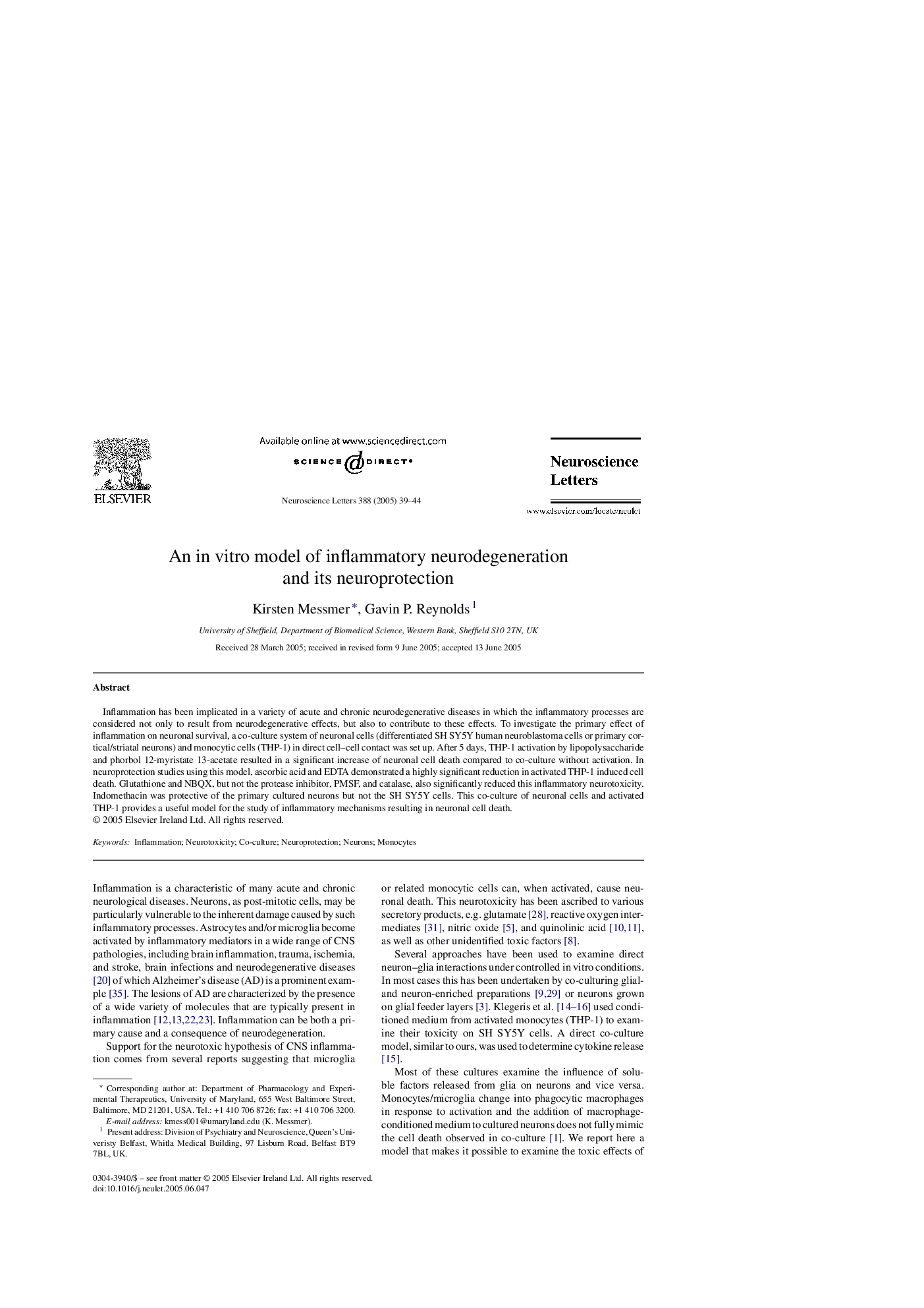| Article ID | Journal | Published Year | Pages | File Type |
|---|---|---|---|---|
| 9428979 | Neuroscience Letters | 2005 | 6 Pages |
Abstract
Inflammation has been implicated in a variety of acute and chronic neurodegenerative diseases in which the inflammatory processes are considered not only to result from neurodegenerative effects, but also to contribute to these effects. To investigate the primary effect of inflammation on neuronal survival, a co-culture system of neuronal cells (differentiated SH SY5Y human neuroblastoma cells or primary cortical/striatal neurons) and monocytic cells (THP-1) in direct cell-cell contact was set up. After 5 days, THP-1 activation by lipopolysaccharide and phorbol 12-myristate 13-acetate resulted in a significant increase of neuronal cell death compared to co-culture without activation. In neuroprotection studies using this model, ascorbic acid and EDTA demonstrated a highly significant reduction in activated THP-1 induced cell death. Glutathione and NBQX, but not the protease inhibitor, PMSF, and catalase, also significantly reduced this inflammatory neurotoxicity. Indomethacin was protective of the primary cultured neurons but not the SH SY5Y cells. This co-culture of neuronal cells and activated THP-1 provides a useful model for the study of inflammatory mechanisms resulting in neuronal cell death.
Related Topics
Life Sciences
Neuroscience
Neuroscience (General)
Authors
Kirsten Messmer, Gavin P. Reynolds,
